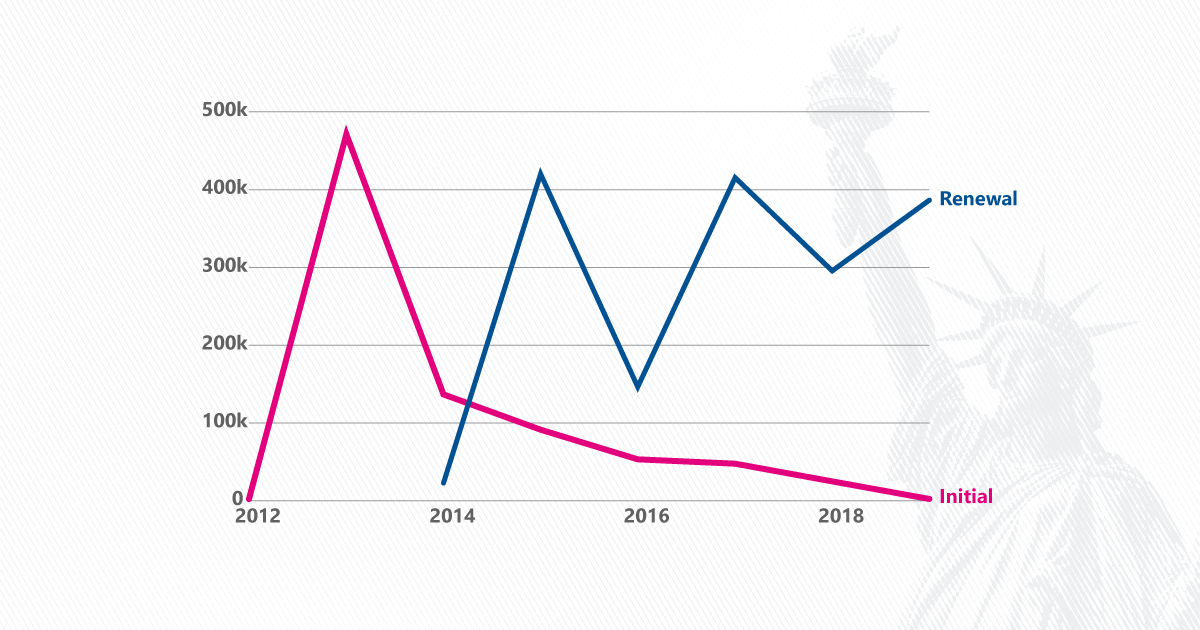Population and society
How many DACA recipients are there in the United States?

The US is home to almost 335 million people, some 46.2 million of whom (13.8%) were born outside of the country[1].
In each year from 2021 to 2023, immigration has driven the nation’s population growth, with net migration outnumbering natural population growth that comes from having more births than deaths. Of the 1.6 million-person increase in the population from 2022 to 2023, 1.1 million (68%) came from immigration, while 504,000 (32%) came from natural growth.
Immigration can be thought of as having three different types:
The first type includes foreign-born people living in the US with temporary visas including work visas, school visas, and visas to be with family. In 2022, the federal government awarded over 2 million such visas, including:
Some immigrants who are sponsored by relatives and employers, as well as refugees and asylees, are granted visas with a path to citizenship. For these people, permanent residence in the US could lead to becoming a naturalized citizen. In 2023, 562,976 visas of this type were issued, including:
Unauthorized immigrants include all foreign-born people who are not citizens or legal residents under either temporary or permanent visas. According to the Department of Homeland Security, most unauthorized citizens either sneak into the US without detection or overstay a previously granted visa.
Unauthorized immigrants also include people who are in the country under Temporary Protected Status, as Deferred Action Childhood Arrivals, or who are awaiting court proceedings.
The unauthorized immigrant population can be difficult to measure using government data by its very nature, as some unauthorized immigrants are undetected by the government.
In any case, the Office of Homeland Security Statistics estimates that there were 11 million unauthorized immigrants in the US as of the start of 2022, 4.8 million of whom were Mexican.
In 2023, there were 3.2 million encounters with unauthorized people attempting to cross the border, which includes some repeat attempts. Most of these (77%) happened at the southern border.
People who are granted lawful permanent residence in the US are colloquially known as “green card” recipients. Green cards need renewal every 10 years and offer a pathway to citizenship.
Some immigrants can apply for green cards, which can change their status from temporary to permanent. In 2022, 552,631 immigrants in the US had their status adjusted to become lawful permanent residents.
Explore more data on immigration and get all the latest data by signing up for our weekly newsletter.
This percentage uses the latest overall population data (2023) and foreign-born population data (2022).